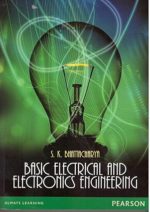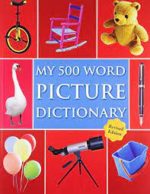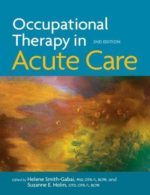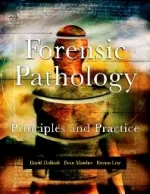-
The Big Moo & Purple Cow
KShs 995.00Seth Godin’s Purple Cow teaches us that in order for businesses to achieve real success, they need to stop being a brown cow and dare to change their colour. But in a world of really good companies, sometimes you need more than a purple cow – you need a big moo. In The Big Moo, a team of bestselling authors and business superstars such as Malcolm Gladwell, Tom Peters and Jackie Huba reveal their secrets for creating sustained remarkability. Their essays are provocative, inspiring and their message is clear: don’t be afraid to be different. Now is your opportunity to combine ideas from both books to ensure that your business always stands out from the crowd.
-
Agricultural Sustainability by Elisa Gomez Gonzalez (Author)
KShs 21,000.00Agricultural Sustainability starts with an overview of agricultural sustainability and the factors influencing the agricultural sustainability. As agricultural sustainability is all about understanding ecosystem services and can be seen as a study of relation between organisms and their respective environment, this text has been written to cover all these aspects. Further, sustainability in poultry and aquaculture has been described to broaden the research and potential of agricultural sustainability in arid and semi-arid areas has also been discussed
-
Basic Electrical and Electronics Engineering
This book provides an overview of the basics of electrical and electronic engineering that are required at the undergraduate level. Efforts have been taken to keep the complexity level of the subject to bare minimum so that the students of non electrical/electronics can easily understand the basics. It offers an unparalleled exposure to the entire gamut of topics such as Electricity Fundamentals, Network Theory, Electro-magnetism, Electrical Machines, Transformers, Measuring Instruments, Power Systems, Semiconductor Devices, Digital Electronics and Integrated Circuits.
-
Perky The Puppy
KShs 395.00Join Perky the playful puppy on a fun-filled adventure! This delightful children’s story is perfect for early readers, packed with charm, cute illustrations, and heartwarming lessons about friendship and kindness.
A Baby Animal Story Book
-
-
My First Board Book Of Vehicles
KShs 595.00In My First Vehicles, little ones will be introduced to different vehicles. The pages of this book are filled with familiar vehicles, including a car, bus, airplane, truck, train, boat, and more. The illustrations are rendered in a vibrant, graphic style, and complete with foil highlights to make this an even more enjoyable experience for babies and toddlers.
-
Perry The Piggy
KShs 395.00Join Perry the Piggy on a heartwarming adventure full of fun, friendship, and life lessons—perfect for young readers and early learners.
A Baby Animal Story Book
-
The retail revolution
KShs 1,695.00Wal-Mart is the world’s largest company and it sets the standard–both social and commercial–for a huge swath of the global economy. In this probing investigation, historian Nelson Lichtenstein shows how the company’s success has spread evangelical Protestantism into the workplace, made South China an American workshop, and pushed American politics to the right. At the same time, he anticipates a day of reckoning, when challenges to the Wal-Mart way, at home and abroad, are likely to change the far-flung empire. Insightful and original, The Retail Revolution gives a fresh and necessary understanding of the phenomenon that has reshaped international commerce.
-
Occupational Therapy in Acute Care-2nd edition
Occupational therapy is an allied health profession with an underlying belief that engaging in occupations promotes both health and wellness. This comprehensive text lays the foundation for occupation-based practice and addresses the contextual issues of working within the acute care setting. The chapters help to demystify medical conditions and issues routinely encountered by occupational therapists working in this practice area. Detailed research covers the importance of occupational therapists’ knowledge of how diseases affect the human body, including the cardiovascular, nervous, and endocrine systems. Chapters review the evaluation process, including chart review, measures, and interpretations and recommendations for intervention to ensure the ultimate level of independence for each patient. Occupational Therapy in Acute Care is designed specifically for therapists working in a hospital setting to acquire better knowledge of the various body systems, common conditions, diseases, and procedures. Students and educators will find this new publication to be the most useful text available on the topic.
-
Forensic Pathology Principles and Practice
KShs 60,000.00Forensic Pathology is a comprehensive reference that uses a case-oriented format to address, explain and guide the reader through the varied topics encountered by forensic pathologists. Developed in response to a severe void in the literature, the book addresses topics ranging from medicolegal investigation of death to death scene investigation, forensic autopsy, and artifacts of resuscitation as well as complications of medical therapy, forensic osteology, forensic odontology, forensic photography, and death certification. The book includes various types of cases, including sudden natural death, asphyxia, motor vehicle collisions, death in custody, child abuse and elder abuse, acute psychiatric and emotional deaths, and pregnancy. It contains sample descriptions of pathological lesions which serve to aid pathologists in reporting their findings to law enforcement agencies, attorneys, and others involved in investigations of sudden death. The concepts outlined in the text are beautifully illustrated by large, colorful photographs. There are also “Do and Don’t” sections at the end of each chapter that provide guidance for handling the types of cases examined. This work will benefit not only experienced forensic pathologists, but also hospital pathologists who occasionally performs medicolegal autopsies; doctors in training; medical examiners; law enforcement personnel; crime scene investigators; attorneys; and fellows and students of the medical sciences.










